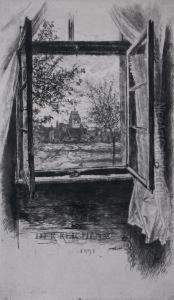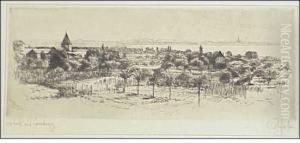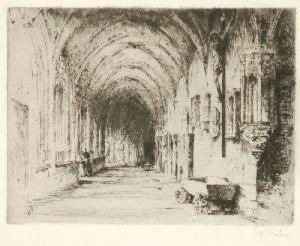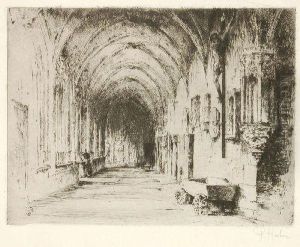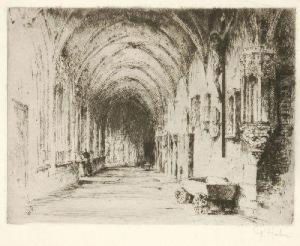Peter Von Halm Paintings
Peter von Halm was a German painter and printmaker, known for his etchings and illustrations. Born in Saarlouis on July 1, 1854, his full name was Karl Peter von Halm, but he was commonly referred to as Peter von Halm. He was an important figure in the etching revival of the late 19th and early 20th centuries, and his work reflects the transition from traditional to modern art during his lifetime.
Halm started his education at the Munich Academy of Fine Arts in 1873, where he studied under the tutelage of Wilhelm von Lindenschmit the Younger and Ludwig von Löfftz, both of whom were influential in shaping his early style. Halm was particularly interested in the techniques of old masters, which led him to focus on the art of etching. His etchings often depicted landscapes, genre scenes, and historical subjects, with a meticulous attention to detail and a romantic sensibility.
In Munich, Halm became associated with a circle of artists who were interested in revitalizing etching as an art form. He played a significant role in the establishment of the Society for Original Etching in Munich (Verein für Original-Radierung München) in 1891, which aimed to promote etching as an independent and respected artistic medium. Halm's work was recognized for its technical skill and artistic expression, and he quickly gained a reputation as a master etcher.
The artist's illustrations were also well-regarded; he produced illustrations for various books and literary works, which were celebrated for their clarity and visual storytelling. These illustrations contributed to the popularization of books as art objects at the turn of the century.
Peter von Halm's influence extended beyond his own creations. As a professor at the Munich Academy of Fine Arts, he taught and influenced a generation of artists, passing on his dedication to craftsmanship and his love for the etching medium. He was known for encouraging his students to develop their own styles while maintaining high technical standards.
Peter von Halm's career spanned a period of significant change in the art world, including the rise of modernism. While he remained rooted in the traditions of the past, his work also showed a willingness to engage with contemporary movements and techniques. Halm died in Munich on June 28, 1923. His legacy lives on through his etchings and illustrations, which continue to be studied and appreciated for their contribution to the revival of etching as an art form.
